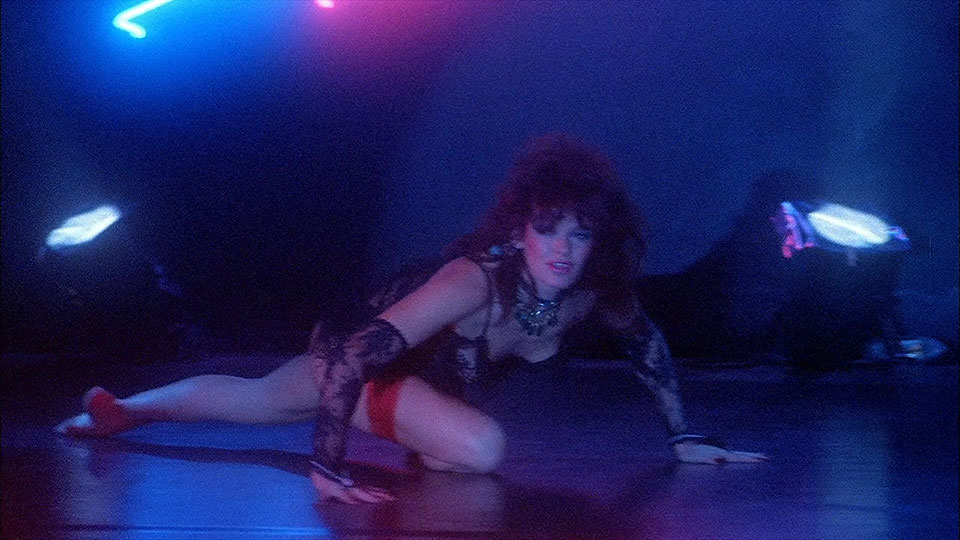“I’m not going to take my top off unless they deserve it.” So Fanny tells her boss Ray, the owner of the Rock Bottom club, where women with complicated costumes and playfully baroque backdrops perform for a crowd of men who look as though they’re wearing cheap disguises. It’s 1987, and Katt Shea, fresh off the set of 1986’s Anthony Perkins-directed Psycho III, was behind the camera for her directorial debut: Stripped to Kill. Produced and distributed by one of Roger Corman’s post-New World Pictures ventures, Concorde Pictures, which would find financial success as an early leader in the home video market, Stripped features much of the softcore sexuality (read: female nudity) and hardcore violence that would typify the VHS-ready adult films to come, preceding the similarly-themed Showgirls and Striptease by nearly a decade.
The film opens with an impressively aerobic performance by Angel for an audience of two: Ray and her similarly feather-haired girlfriend Roxanne. Roxanne and Angel plan to move in together, despite a violently emotional response from Roxanne’s brother Eric, first introduced struggling to construct breasts on a clay sculpture — a subtle reference to revelations to come. Angel is the film’s initial gruesomely-dispatched victim, tossed from a bridge and lit on fire; the cop who discovers the violent scene, played by Kay Lenz (Daytime Emmy winner and star of Clint Eastwood’s Breezy), is pressured by her partner to become a performer at Rock Bottom for “deep background.” Before long, another dancer is killed, our heroine is hooked on the power of performing topless, and the local retired policeman/disgraced pedophile is interfering in what is an increasingly troubled investigation.
Shea’s first feature takes inspiration from more than the title of De Palma’s own sexy slasher, Dressed to Kill — though Shea dates the film’s inception to her first visit to a strip joint, where she was impressed by what she described as the “performance art” she saw on stage. (Coincidentally, Shea played a Babylon Club extra in De Palma’s Scarface.) Much of Stripped’s 88-minute runtime is devoted to song-length, dauntingly athletic dances by the performers Shea hired to fill out the cast, and though this may be the result of Corman’s meddling in the editing booth, frankly, they’re the most successful part of what feels like an unnecessarily conservative film (including the film’s final line: “My thighs aren’t fat!”). Shea’s signature interest in outsider characters — from the fantastically styled Eric to the tragically walkman-ed “Pocket” to a striking man who interrupts the final chase to ask Lenz if she wants to “buy” a dead rat — is already compellingly developed in her debut, and the film’s success led to several additional films for Concorde Pictures/Corman (including a sequel) and her breakout studio classic, 1992’s Poison Ivy. As such, it’s more than worth a watch — fittingly enjoyed at home.
Stripped to Kill is streaming on Prime (Dec. 2020)



